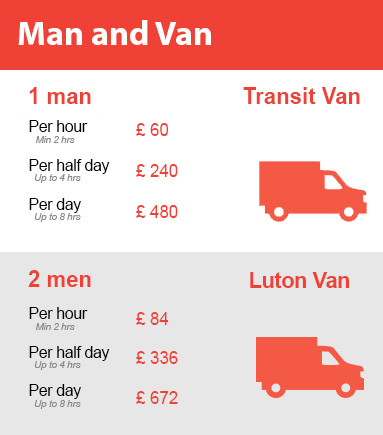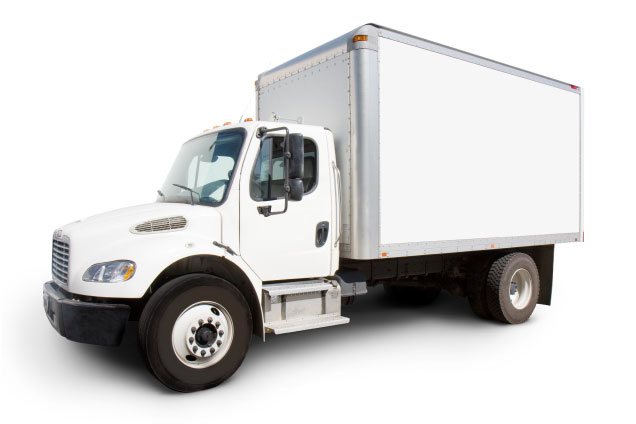The Risks of DIY Piano Moving and the Importance of Expertise
Posted on 21/05/2025
The Risks of DIY Piano Moving and the Importance of Expertise
Moving a piano is not a simple task. These beautiful, complex instruments are not only expensive but also incredibly delicate. While the idea of saving money by attempting a DIY piano move might be tempting, the dangers far outweigh the perceived benefits. This comprehensive article explores the risks of moving a piano yourself, demonstrates why professional piano movers are the best choice, and provides tips for safely transporting your valuable instrument.

Understanding the Complexity of Piano Moving
Pianos are more than just oversized furniture. A standard upright piano can weigh between 300 and 500 pounds, while grand pianos can easily surpass 1,000 pounds. But weight isn't the sole challenge--pianos are also awkwardly shaped, top-heavy, and filled with intricate internal mechanisms. Improper movement can cause immediate or long-lasting damage.
- Delicate Components: Pianos contain thousands of moving parts, including strings, hammers, and pedals.
- Irregular Weight Distribution: The uneven weight places stress on specific points, making balance and stability difficult.
- Fragile Finishes: Damage to the exterior can occur with a slight bump or scratch during a move.
Given these factors, it's easy to see why the risk of a DIY piano move is so high. Let's examine these dangers in detail.
Major Risks Associated With DIY Piano Moving
1. Risk of Personal Injury
The most immediate concern with moving a piano yourself is the physical danger involved. Pianos are bulky and difficult to maneuver, especially in homes with tight hallways, stairs, or narrow doorways. Without the proper equipment and technique, you expose yourself to:
- Back and muscle injuries from lifting heavy weight incorrectly.
- Crushed fingers or feet if the piano slips or falls.
- Slips, trips, and falls due to loss of balance.
Professional piano movers are trained in safe lifting techniques and use supportive straps, harnesses, and dollies designed specifically for this purpose. They also know how to distribute weight and communicate as a team to avoid accidents.
2. Risk of Damaging the Piano
A piano is the culmination of expert craftsmanship, with components made from wood, felt, metal, and other materials. Even slight jostling or tilting during a move can:
- Throw the instrument out of tune
- Cause internal damage to hammers, strings, or soundboard
- Lead to cracks or warping due to impact or sudden temperature changes
Attempting a DIY piano move without understanding these vulnerabilities can result in costly repairs or even irreparable damage. Unlike moving common household items, pianos require a gentle, stable touch and sometimes need to be partially disassembled and rebuilt at the new location for safe passage.
3. Property Damage Concerns
Homes and building infrastructure are at risk during a do-it-yourself piano relocation. You might accidentally:
- Scratch or gouge floors and walls
- Break banisters or railings on stairways
- Damage door frames and thresholds
These avoidable mishaps can turn a cost-saving effort into a financial disaster, with repairs sometimes costing more than the original move itself.
4. Insurance Issues and Liability
When you move a piano yourself, any damage or loss is usually not covered by homeowner's or renter's insurance. Most policies exclude damage resulting from personal mishandling. In contrast, reputable piano moving services are insured and guarantee the safety of your instrument from pick-up to final placement.
If an unplanned accident occurs during a DIY piano transport--such as dropping the piano or causing structural damage--you'll likely bear full financial responsibility for all repairs.
Why Experience Matters: The Expertise Behind Professional Piano Moving
1. Special Equipment and Techniques
Moving a piano requires more than just muscle--it demands specialized tools and knowledge. Professional movers use:
- Piano dollies and skid boards engineered to handle the weight and size of various piano models
- Padding and wrapping materials to protect fragile surfaces
- Door and stairway ramps for smooth transitions
This equipment, combined with precise, practiced methods, ensures your piano is transported safely and efficiently--minimizing risk to both people and property.
2. Trained Teams
Every professional piano moving company employs trained crews who:
- Understand **balance and leverage**
- Work together in sync to overcome obstacles
- Recognize how to disassemble and reassemble delicate components
Such expertise comes only from experience--something you can't replicate with a few friends, regardless of strength or enthusiasm.
3. Planning and Logistics
Professional piano movers meticulously plan each step, starting with:
- Measuring doorways, stairways, and hallways
- Determining the best moving path
- Assessing obstacles like stairs, tight corners, or uneven surfaces
This foresight drastically reduces the likelihood of an accident or damage during piano relocation.
4. Insurance and Peace of Mind
Hiring a professional piano mover means your instrument and property are fully insured. This coverage provides peace of mind, knowing any unforeseen damages are not your financial responsibility. Professional moving companies also often offer additional guarantees, ensuring prompt and safe delivery or compensation in rare cases of mishaps.
Common Mistakes Made During DIY Piano Moves
If you're still considering moving a piano yourself, it's critical to understand the most frequent mistakes made during inexperienced moves:
- Insufficient manpower: Underestimating the number of people needed
- Improper lifting techniques: Causing personal injuries or dropping the instrument
- No use of proper moving equipment: Attempting to move the piano on its own legs instead of a dolly or skid board
- Poor route planning: Failing to measure doorways and hallways, leading to last-minute trouble
- Incorrectly securing the piano during transport: Resulting in jostling or falling over during the drive
- Neglecting climate considerations: Sudden temperature changes or high humidity can damage wood and internal glues
Many of these DIY piano moving risks result not from lack of care, but from lack of expertise and access to the right tools.
How Professional Piano Movers Ensure Safety and Success
1. Pre-Move Assessment
Experts begin with a detailed walkthrough, noting all points of concern. They will:
- Inspect the piano's structural condition
- Map the moving route
- Identify all potential obstacles
This attention to detail helps prevent costly mistakes.
2. Use of the Right Equipment
With the proper dollies, padding, and lifting straps, professional movers avoid the mishaps that can plague amateurs. They'll dismantle removable parts as necessary--like legs or pedals on a grand piano--for safe transportation. The right equipment also reduces physical strain on the movers themselves.
3. Careful Packing and Securing
Pianos are meticulously wrapped with thick blankets and shrink wrap to prevent scratches and absorb vibrations. They are then secured inside a truck using heavy-duty straps, ensuring the piano stays stable during transit.
4. Post-Move Inspection and Tuning
After arriving at the new location, professionals will:
- Carefully reassemble any removed components
- Set the piano in its new location, observing ideal climate and placement conditions
- Recommend tuning and professional attention to ensure optimal sound and performance after the move
This comprehensive approach guarantees both physical and audible integrity of your instrument.
Signs You Need Professional Piano Movers
Consider enlisting an experienced moving service if:
- Your piano is an upright, baby grand, or concert grand model
- You must navigate stairs or tight spaces
- Your piano holds sentimental or antique value
- You lack access to the appropriate moving equipment
Remember, the cost of professional moving is usually far less than the potential repair bills for a damaged instrument or property--not to mention the risk of personal injury.

Frequently Asked Questions About Piano Moving Expertise
1. Can't Two Strong People Move a Piano?
Strength alone isn't enough. The awkward size and weight distribution requires special handling, balanced lifting, and an understanding of the instrument's fragility. Inexperience increases the risk of injury and damage.
2. What Makes Piano Moving More Difficult Than Other Furniture?
Unlike a couch or table, pianos have complex internal mechanisms and are highly sensitive to jarring or improper tilting. Minor bumps can affect the soundboard or strings, requiring professional repairs.
3. Will a Moving Company Move My Piano?
Not all general movers are qualified for piano moving. Always check credentials and seek a dedicated piano moving company with experience and insurance.
Conclusion: The Value of Trusted Expertise in Piano Moving
Attempting a DIY piano move involves significant risks: personal injury, damage to your piano or property, complicated logistics, and financial liabilities. Though it may seem like a cost-saving measure, moving a piano without the right knowledge, equipment, and expertise can result in overwhelming expenses and heartbreak.
On the other hand, entrusting your instrument to skilled piano movers guarantees: safety, efficiency, insurance coverage, and the continued well-being of your cherished instrument. Don't gamble with the future of your piano--let the experts handle the heavy lifting and the specialized care this investment deserves.
If you're planning a move, consult a reputable, insured piano moving company. Your peace of mind, and the preservation of your instrument, are well worth it.





